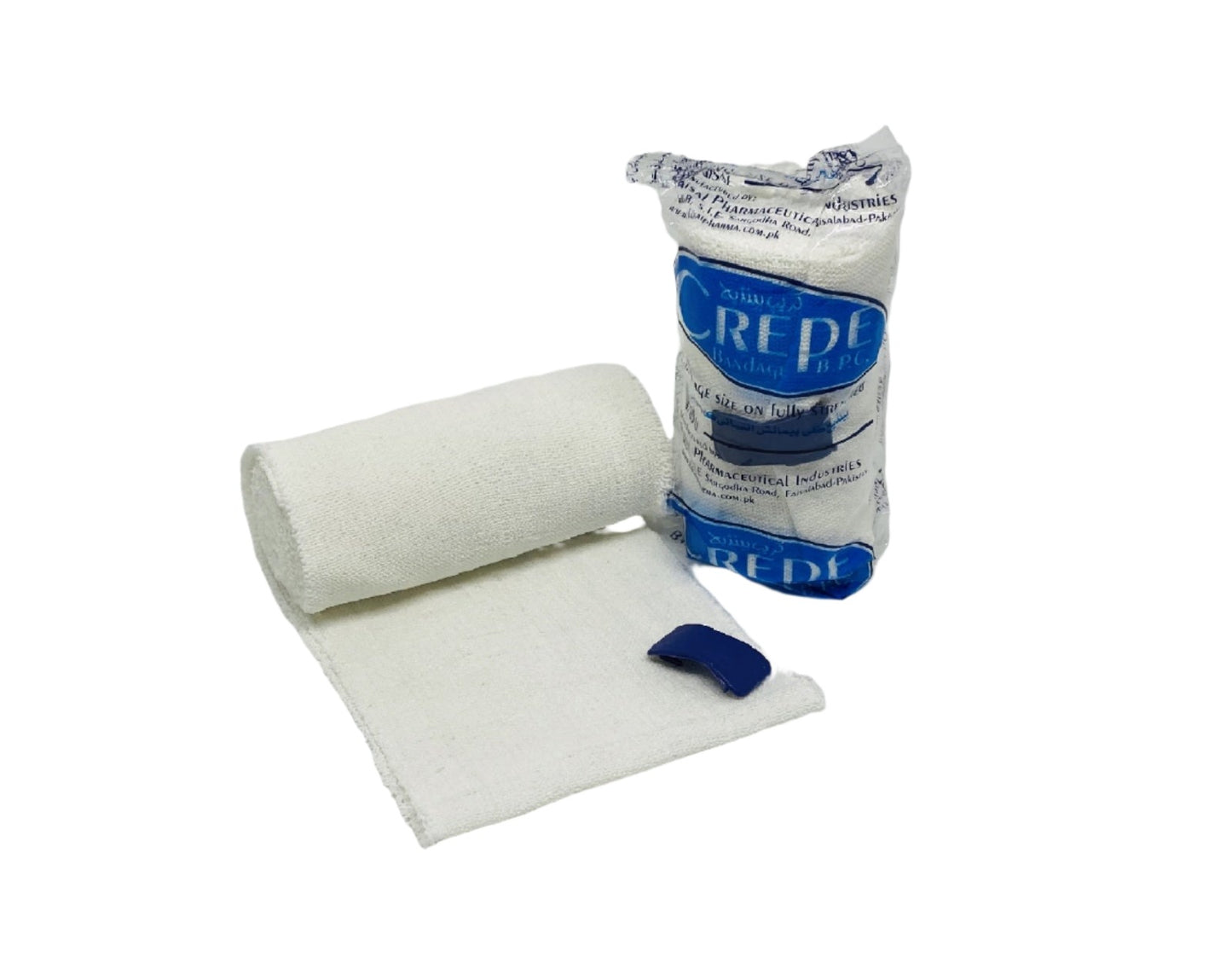CREPE COTTON BANDAGE
CREPE COTTON BANDAGE
Couldn't load pickup availability
Crepe Cotton Bandage
Crepe Bandages consists of a cotton fabric of plain weave with a degree of elasticity that is imparted by the presence of twisted cotton yarns. The bandage may be washed if required and when allowed to dry naturally, loosely folded, it will regain some of its original elasticity.
Medium Compression Bandages
• The compression power of this bandage can be easily adjusted due to their stretch properties. Good for re absorption improvement of hematology, prophylaxis of thrombosis, after-care of varicose veins damage and for therapy of vein insufficiency.
Durable, washable and easy to fit.
• 84% cotton, 7% poly amide, 9% polyurethane.
• 21 threads/sq.cm.
• Stretched Length: 4.50m.
• Elongation: >180%.
• Approx. weight when stretched: 64g/sq.m
• With or without individual wrapping in cellophane.
Indications
Crepe Bandages is used for the application of light pressure and support in the treatment of sprains and strains, and varicose veins, and as a support to aid rehabilitation following orthopedic surgery. It was also used historically in conjunction with a suitable primary dressing, such as a zinc paste bandage, for the treatment of varicose ulcers although other more elastic products are now available that are more suitable for this application.
Contra-indications
In common with all extensible bandages, Crepe Bandages should be used with caution on patients who have marked ischemia or impaired arterial blood supply.
Method of use
When applied to a leg, the bandage should be held with the bulk roll facing upwards. Working from the inner aspect of the leg, a single turn is made over the top of the foot around the base of the toes to secure the bandage, and a second turn taken up to the base of the heel. After making a figure-of-eight around the ankle, the bandage is applied up the leg, with each turn overlapping the previous one by 50%. Once in place, it may be fastened with safety pins or tape, as appropriate. Care should be taken to ensure that the bandage does not cause a tourniquet effect at the knee, and the operator should ensure that a pressure gradient exists beneath the bandage, with the highest levels of pressure at the ankle.
Frequency of Change
In critical applications where the control of sub-bandage pressure is important, the bandage should be reapplied or replaced as frequently as practicable. In other situations, it is not uncommon for a bandage to be left undisturbed for up to 5-7 days, although there is little doubt that, at the end of this time, the residual pressure beneath the bandage will be only a fraction of the original application pressure.
Presentation
Crepe Bandages is presented individually shrink-wrapped.


